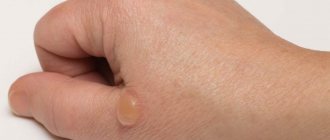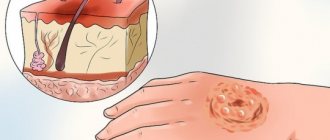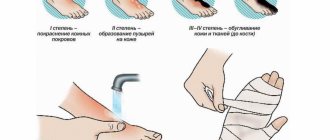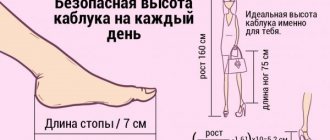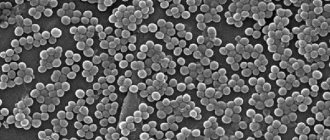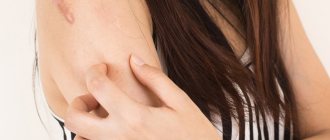Degrees and treatment of burns
Features of treatment and further regeneration of the skin will depend on the degree of the burn, its depth and size.
There are four degrees of burn:
- 1st degree burn. The outer layer of skin is damaged. As a result, there is slight redness of the epidermis and swelling, which may be accompanied by pain. Typically, burn marks disappear after 2-3 days;
- 2nd degree burn. The upper, stratum corneum layer of the skin is affected, and sometimes the next layer is damaged. Blistering, redness and pain are quite common. If you choose the right treatment method and use appropriate therapy, after 10-12 days there will be no trace of the burn;
- 3rd degree burn. It is one of the most serious skin injuries. It spreads to the deep layers of the skin, affecting the upper subcutaneous tissue. Blisters and scabs appear. The wound takes a long time to heal;
- 4th degree burn. The skin becomes charred and the subcutaneous bones are damaged. All skin layers and tissues located underneath die. In this case, immediate hospitalization will be required.
In order to properly provide the necessary assistance and not harm the victim, it is worth understanding the cause of the injury. This will not cause any difficulties if you have an idea of the types of burns:
- thermal burns can be obtained when the skin interacts with boiling water, fire, or a hot object;
- a chemical burn is caused by a chemical or alkaline agent;
- radiation burn occurs as a result of ultraviolet radiation;
- A radiation or electrical burn occurs when in contact with an electric current or a voltaic arc.
For quick healing when receiving a first-degree burn, it is important to provide first aid in a timely manner. To do this, it is necessary to urgently eliminate the cause of the burn. Cool the affected skin area with ice or cold water.
It is not recommended to immediately apply anti-burn cream or ointment to the wound. Initially, you need to clean the intact skin located in close proximity to the burn with ether, then wipe with alcohol. Sodium chloride can be used to remove dead tissue from a wound.
A victim with a severe burn, before the ambulance arrives, should be given an anesthetic, analgin, ketanal or pentalgin, and an antihistamine in the form of claritin, tavegil or suprastin. Dexpanthenol is effective for burns.
If there is no vomiting, you can drink mineral water or liquid with dissolved salt and soda with a dosage of 0.5 tsp. per liter of water.
If you receive severe burns, you should not self-medicate; you should immediately seek medical help.
The area is determined by several fairly simple and quick methods.
The "palm" rule - the surface of the victim's palm is approximately 1% of the surface of his body.
The rule of “nines” - the entire surface of the skin is conditionally divided into areas that are multiples of nine in area. Thus, the head and neck approximately make up 9% of the body area, the anterior surface of the torso - 18%, the posterior surface of the torso - 18%, the arm - 9%, the leg - 18%, the perineum - 1%.
There are also more accurate methods for determining area by measuring on graph paper with subsequent conversion to percentages, but they are not widely used and are used more for scientific purposes.
With burns of more than 15% of the body surface, burn disease develops - a severe violation of the general condition, accompanied by dehydration, shock, intoxication, the development of a septic condition, and failure of vital organs and systems. At the same time, burns of more than 40% of the body surface are considered very severe, and more than 80-90% of the body surface are often incompatible with life.
Skin restoration
After a burn, a blister containing a colorless liquid may form on the skin. Its proper treatment will help avoid an inflammatory and purulent reaction. Under the neoplasm there will be a renewed skin layer; after 8-10 days, the damaged part will dry out and fall off.
In place of the blister, new skin will appear in the form of a pink spot. The renewed skin area is usually very sensitive, so it is recommended to treat it with special creams and ointments that promote effective and safe recovery.
Failure to provide first aid in a timely manner can lead to disappointing consequences. An infection will appear at the burn site, the resulting blister will become inflamed and begin to fester. The phenomenon usually entails fever, poor health, chills and weakness. The wound will heal slowly and recovery may take too long. In order to avoid serious complications, you should not hesitate, you need to urgently contact a specialist, who, in turn, will conduct tests and prescribe the correct treatment.
Proper first aid
Further recovery depends on how competent first aid is provided for a 2nd degree burn. The procedure is as follows:
- Remove the source of damage.
- Rinse the damaged area under running cold water.
- Treat the skin with an alcohol-free antiseptic.
- Apply a sterile bandage.
- Give pain medication as needed.
But here is what you should absolutely not do in case of a 2nd degree burn:
- tear off clothing stuck to the wound;
- cool the burn with ice;
- bandage the wound tightly or use cotton wool in the dressing;
- Lubricate the damaged area with oil, sour cream or alcohol.
After providing first aid, you should consult a doctor. Only a specialist will determine how to treat a 2nd degree burn and give individual recommendations. As a rule, such lesions are treated at home. The exception is burns of the respiratory system and esophagus.
Treatment of post-burn scars and scars
The scar that appears at the burn site can sometimes become inflamed and form a keloid scar, which is accompanied by severe
itching. Large scars left after a burn injury are treated with surgery. It is possible to get rid of a post-burn scar by excision of the scar, onto which a cosmetic suture is subsequently applied. After its removal, the resulting scar is treated with medications to promote rapid healing.
Scars that occupy a small area can be removed by laser resurfacing; chemical peeling based on fruit acids can also be used. For a quick regeneration process, it is additionally advisable to use special ointments and gels.
Rules for treating wound surfaces
If a weeping burn occurs, frequent dressings with appropriate treatment are required. Scheme for treating a weeping wound:
- Dressing and treatment are carried out in the appropriate room (dressing room),
- Instruments and dressings must be sterile,
- The old bandage is removed carefully without causing pain to the patient. After which the used dressing material is placed in a container filled with a disinfectant,
- Dressing is carried out by a doctor and a nurse,
- If the wound is deep, then it is washed to thoroughly remove purulent exudate,
- If necessary, the doctor performs a revision of the wound,
- The burn is treated with antiseptic solutions that do not irritate tissue (Chlorhexidine, Furacilin, Hydrogen Peroxide, etc.),
- The edges of the wound are treated with alcohol antiseptics (Iodine, medical alcohol, etc.),
- If necessary, ultraviolet irradiation of wounds is carried out,
- Medicines are placed into the wound depending on the stage of the inflammatory process. If the wound is very wet, use drying agents in the form of powders that contain antibacterial agents,
- A bandage is applied.
It should be noted that dressing is done several times a day, depending on the degree of wetness and contamination of the dressing. At the very beginning of the inflammatory process, dressings are carried out up to 4 times a day.
What not to do with a weeping wound after a burn:
- Touch the surface of the burn with your hands,
- Use cotton wool to apply a bandage. When cotton wool is directly applied to the wound, its fibers will linger on the open surface. This will lead to even greater separation of exudate and the development of severe inflammation,
- Wash the burn wound with water,
- based on fat and oils when dressing Such drugs create a greenhouse effect, which only aggravates the pathological process. A weeping wound must “breathe”, that is, oxygen must be provided to it, otherwise the inflammation intensifies,
- Injure the wound surface when performing dressings,
- Tear the bandages off the wound with force. If the dressing material has dried to the wound surface, then it is necessary to pour it generously with any non-alcohol antiseptic. As the material gets wet, it will come unstuck from the wound,
- Self-medicate and independently prescribe and discontinue medications.
Remedies for burns
Today, there are many types of medications for burns in the form of gels, ointments, sprays, creams and dressings.
For example, Levomekol helps well with thermal burns. The drug has bactericidal properties, thanks to which the injury heals much faster. Moreover, the constituent components are substances that help relieve pain.
Povidone-iodine ointment contains iodine. The chemical element disinfects the site of damage and promotes the rapid restoration of skin tissue. Balm Rescuer, made from natural ingredients, can restore damaged skin to a healthy appearance in the shortest possible time.
The creams have also actively proven themselves in the treatment of burns, which are used at the recovery stage of damaged tissue areas. They can be used for preventive purposes against the formation of scars. Panthenol cream helps well with thermal and sunburn.
Main types of chronic wounds
- Diabetic foot syndrome (DFS) is a set of anatomical and functional changes that develop against the background of diabetes mellitus, increasing the risk of injury and infection of the soft tissues of the foot. According to the World Health Organization, the risk of developing DDS in diabetics with 5-10 years of experience is about 15%. For diabetics with more than 15 years of experience, it increases to 90%.
- Prevention: protecting feet from injury, comprehensive foot and nail care, wearing shoes for diabetics.
- Trophic ulcers are complications of venous insufficiency caused by changes due to thrombophlebitis or deep vein varicose veins. Poor circulation and blood supply to the legs leads to venous congestion, and this leads to the formation of poorly healing ulcers on the ankles or legs.
- Symptoms are swelling, impaired skin pigmentation (redness or pallor), eczema, a feeling that the legs are bursting from pressure (more often in the evening).
- Prevention: timely treatment of the underlying disease, wearing elastic tights, treating the skin with antiseptic and healing agents.
Possible complications
Burn wounds are dangerous due to the development of a number of complications:
- Wound infection. An open and weeping burn is a favorable environment for the development of pathogenic microorganisms. An infected burn wound does not heal for a long time and is characterized by the presence of severe symptoms (pain, increased temperature in the wound area, swelling and discharge of pus from the wound surface),
- Formation of ulcers and gangrene of the limb. This complication occurs when there is no adequate treatment, medications are selected incorrectly,
- Sepsis. General blood poisoning leads to infection of the entire body. As a result, multiple organ failure occurs. This complication is dangerously fatal. The patient experiences a sharp and persistent increase in body temperature, severe weakness, dizziness, loss of consciousness, and chills.
How to prevent
GMS Clinic pediatrician Maria Fadeeva recommends:
- Keep matches and lighters out of the reach of children
- keep hot foods and drinks away from the edge of the table
- Place irons and curling irons that are turned on so that the child cannot reach them
- cook on the back burners, turn the handles of pots and pans towards the wall or to the side so that the child cannot accidentally grab them
- use protective devices that block the switching on of stoves
- do not carry the child in your arms while preparing food
The kitchen is no place for a small child, especially when preparing food.
- Do not leave your child unattended in a room with heaters on.
- Check the temperature in the bathroom before bathing children
- Keep children away from bonfires and do not set off fireworks nearby
- Avoid inhalation over hot decoctions and boiled potatoes for ARVI - this is ineffective and creates a high risk of burns to the respiratory tract and face.
Symptoms
The peculiarity of this complication is that ichor constantly oozes. Depending on the degree of damage, the symptoms become more severe. In the event of a bacterial infection, the body tries to get rid of the pathogenic flora, as a result of which increased plasma production occurs.
A weeping burn is accompanied by symptoms such as inflammation around the lesion, granulation, pain, and slight swelling. If the patient is not given proper therapy for a long time, there is a likely risk of developing sepsis. How to treat a weeping burn, what kind of care to provide, in this case it is better to find out from a doctor; antibacterial drugs are often prescribed in various dosage forms.
